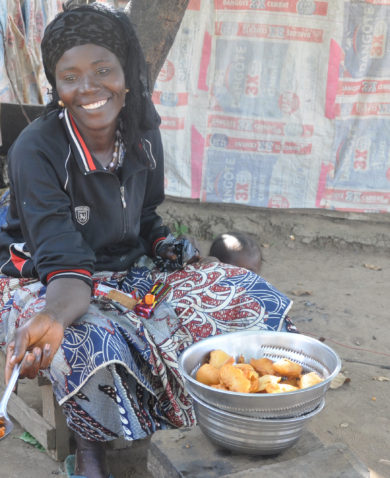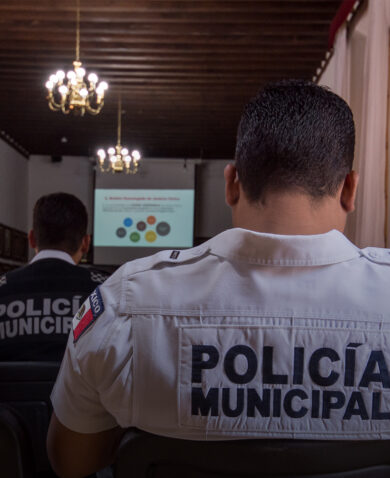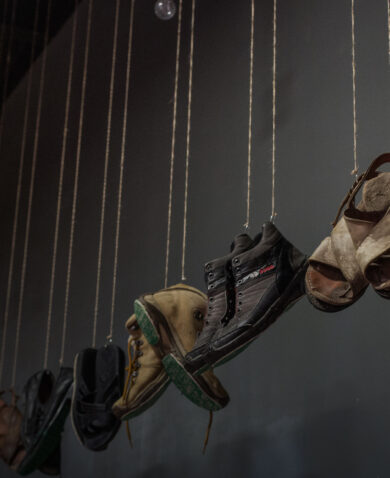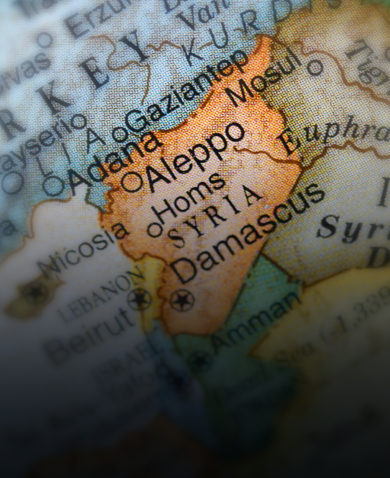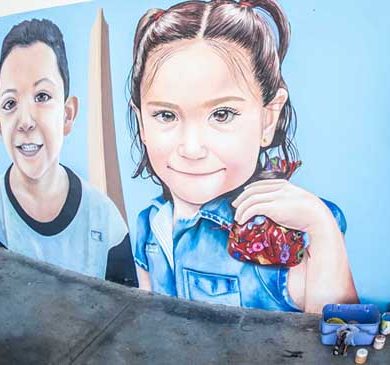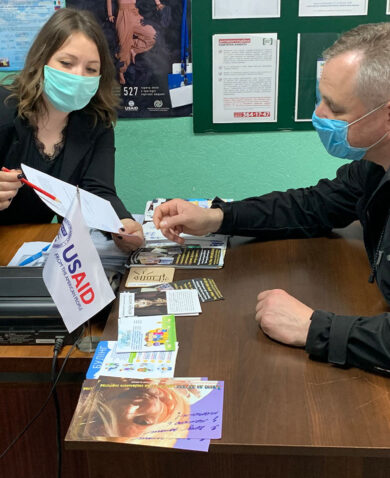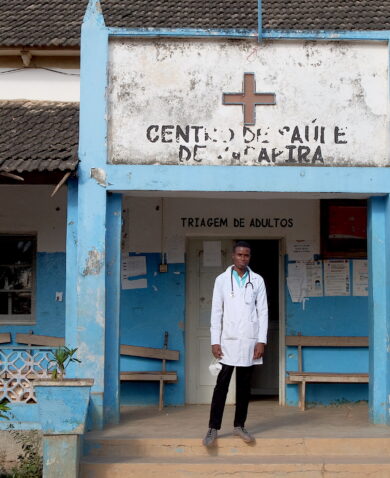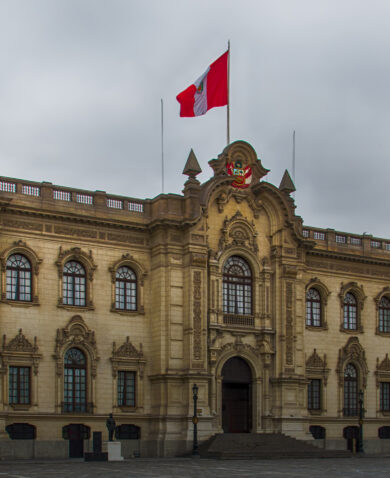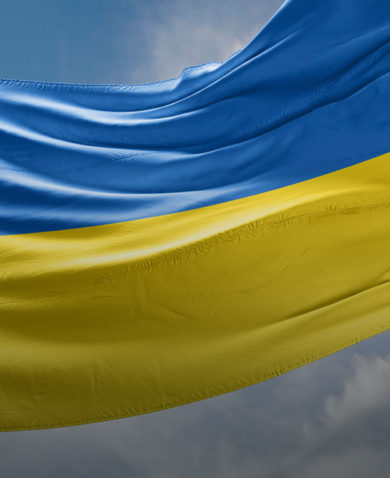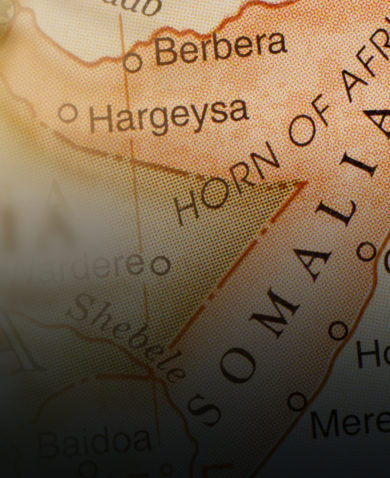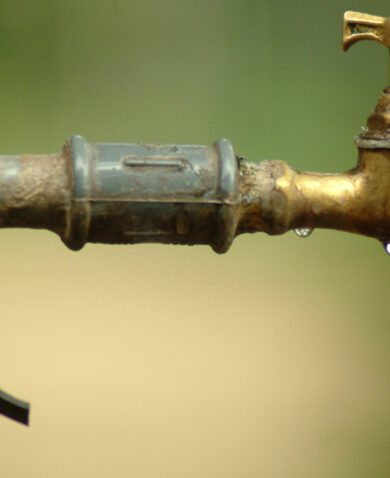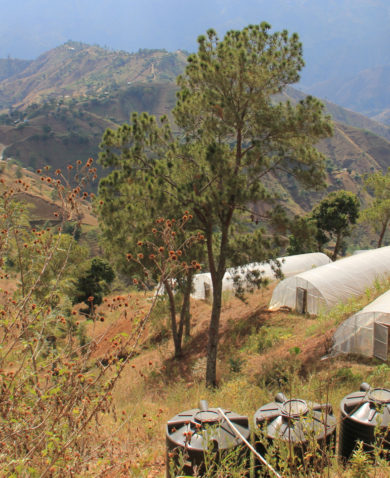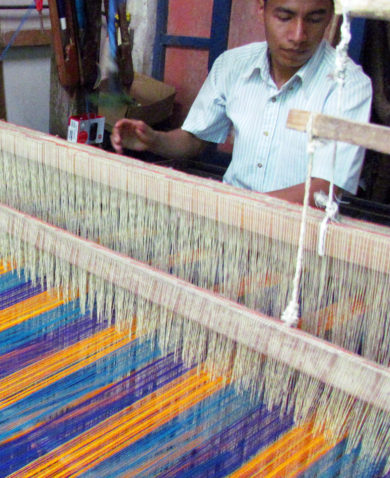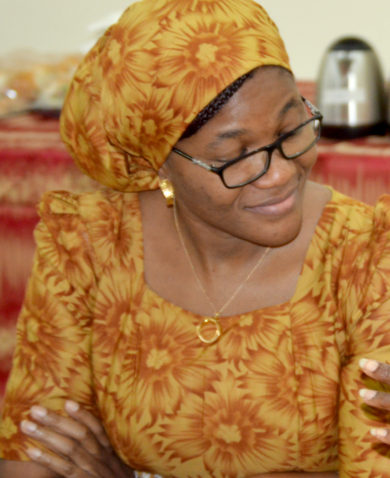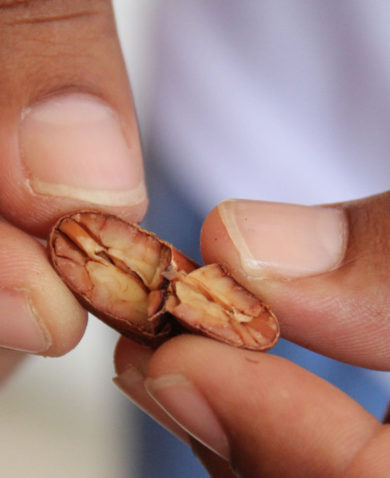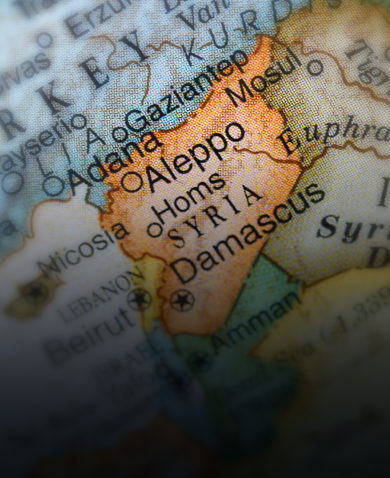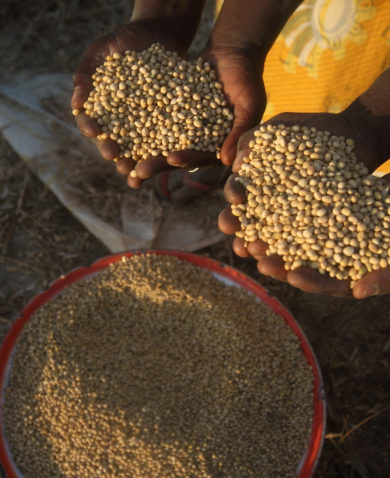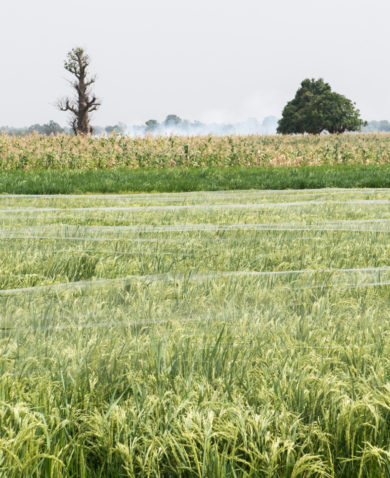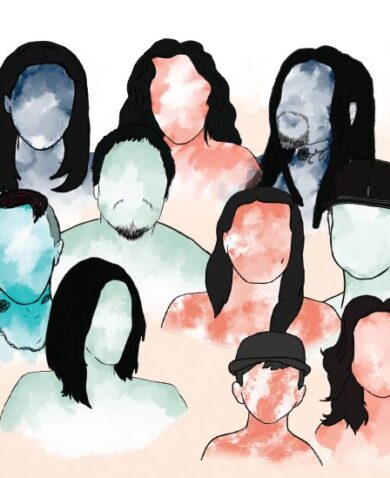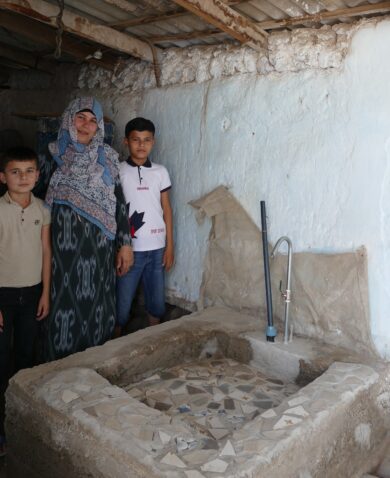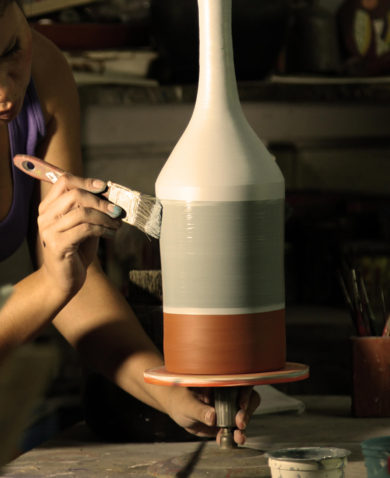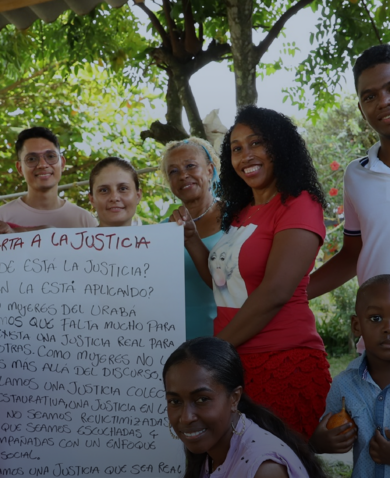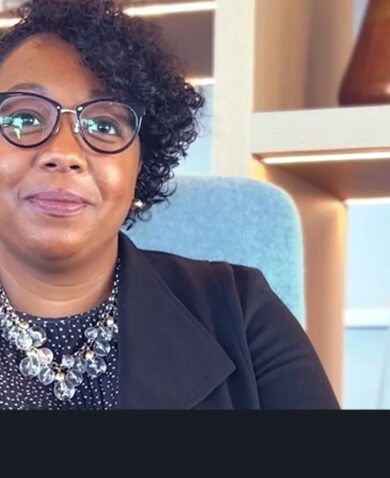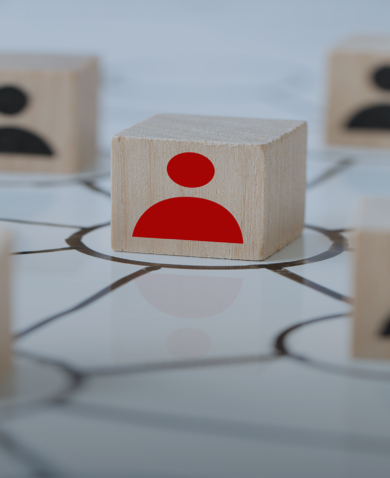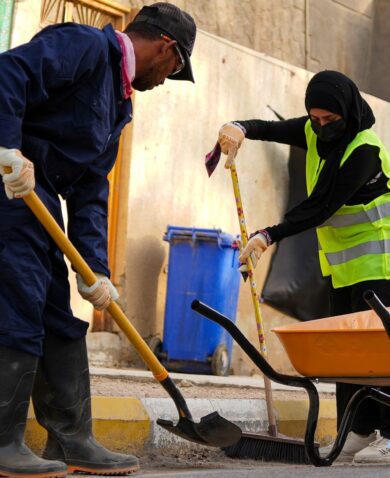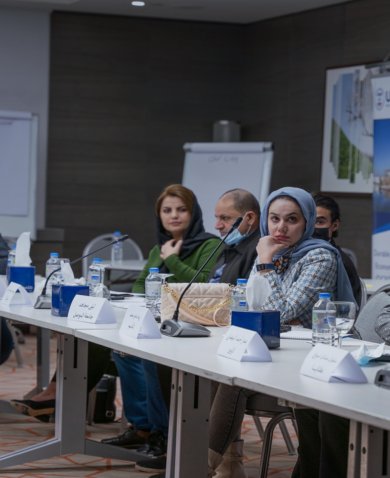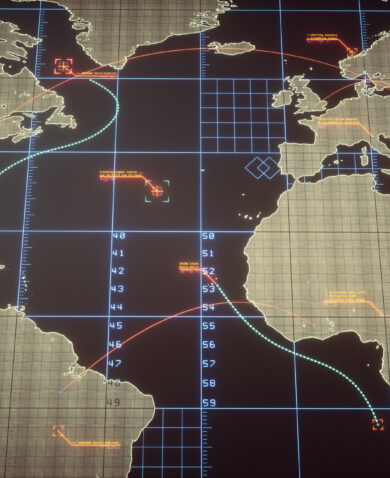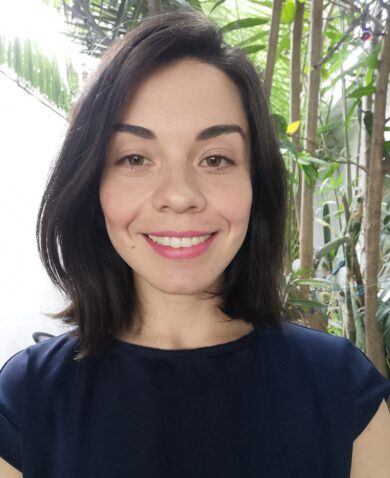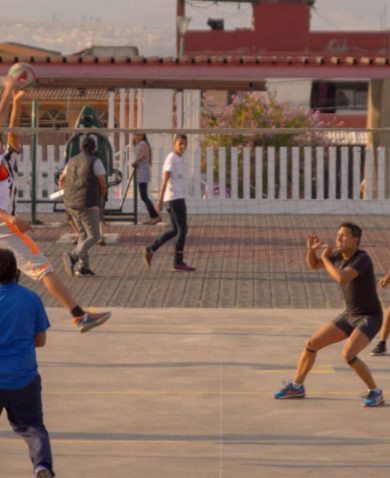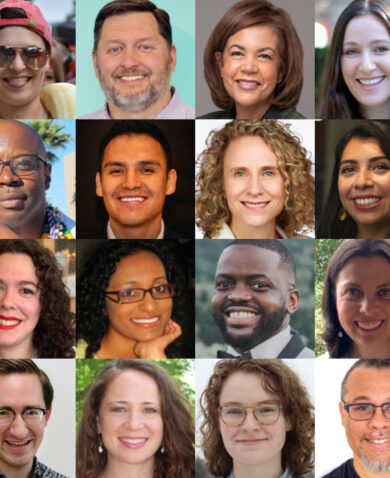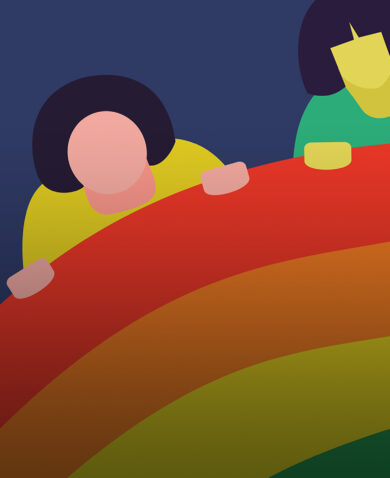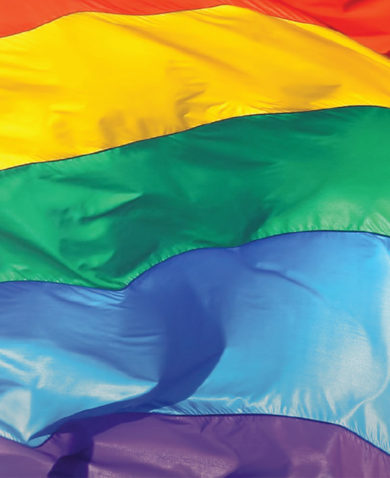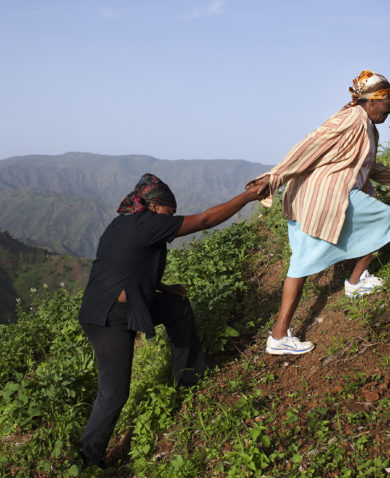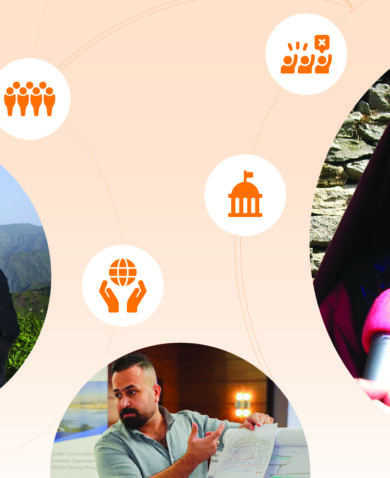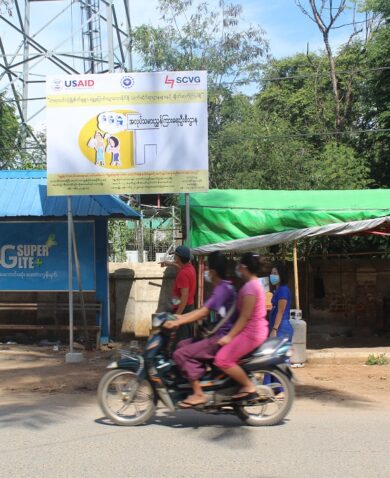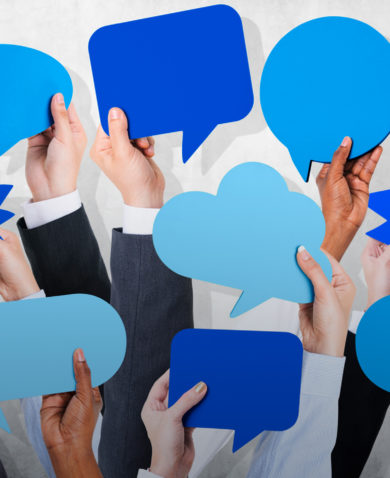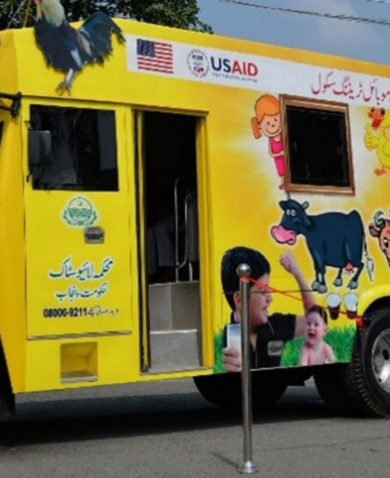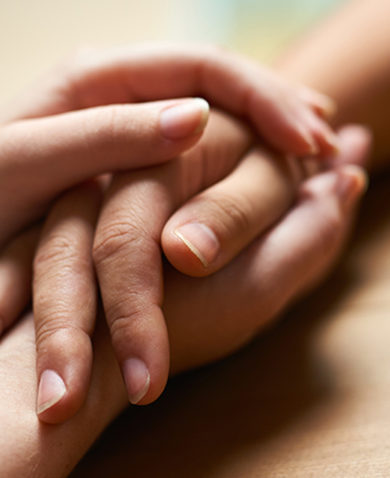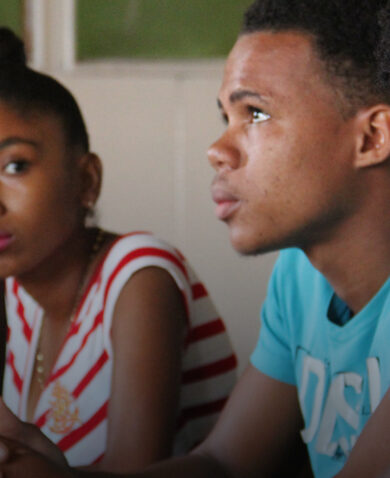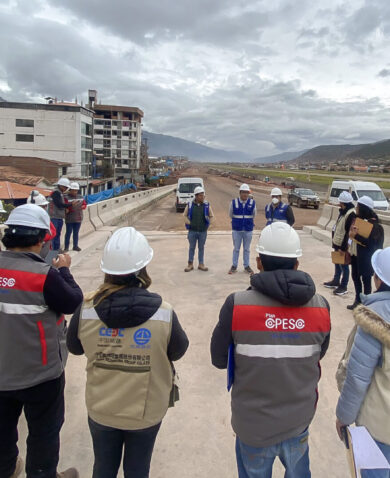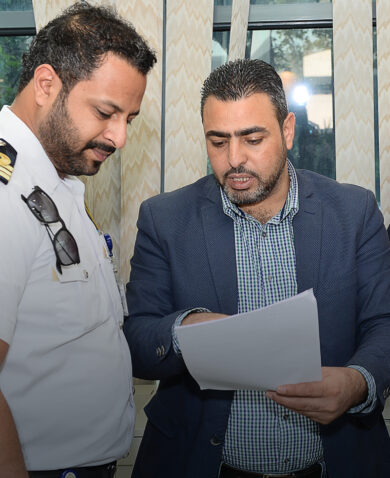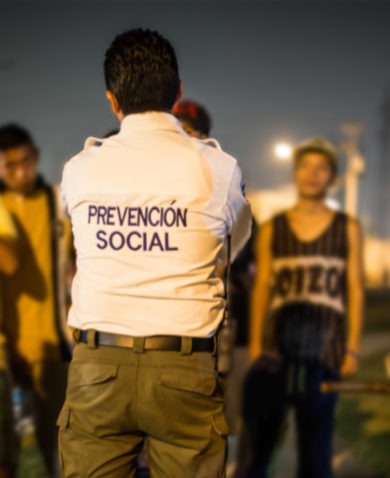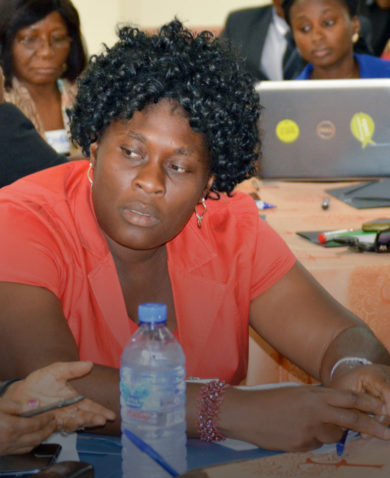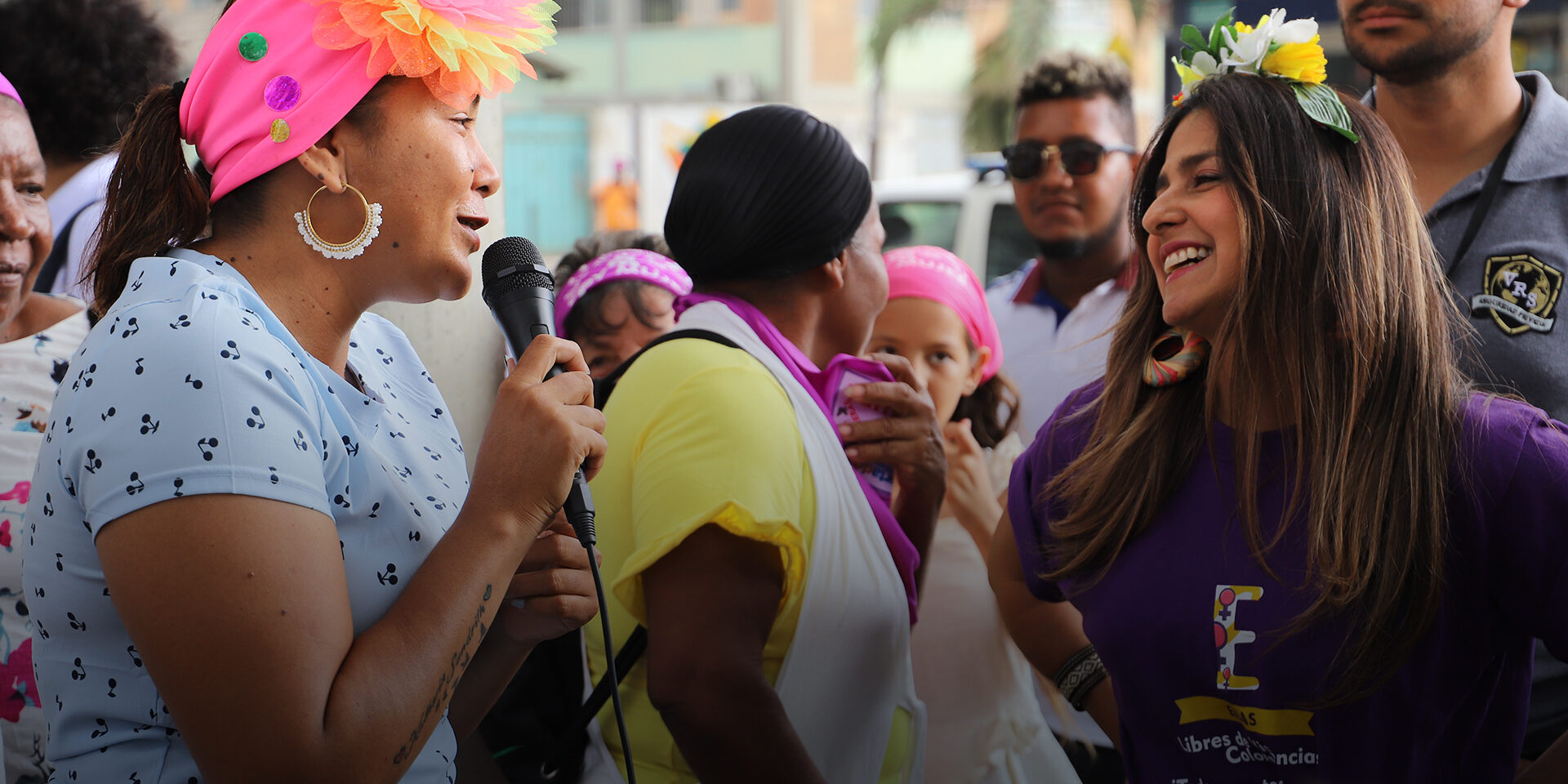
3 Questions with Cecilia Barraza on Leveraging Mobile Apps for Gender-Based Violence Prevention and Response During COVID-19
December 8, 2020 | 4 Minute ReadHow have the socioeconomic impacts of the COVID-19 pandemic exacerbated drivers of gender-based violence, and how can a mobile app provide innovative solutions towards violence prevention?
Colombia, like other countries, implemented stay-at-home measures and restricted certain social services to limit the spread of COVID-19 beginning in mid-March 2020. Women and girls have disproportionately faced increased risks of experiencing gender-based violence (GBV) due to the socioeconomic fallout, and women in Colombia often lack consistent and reliable pathways to report violence. In response, the Colombia Justice for Sustainable Peace project leveraged its relationship with the ELLAS app (available in Google Play and the Apple Store) to partner with radio, press, television, and social media to promote awareness of the app’s content on accessing justice systems and GBV service referral pathways.
To mark the 2020 16 Days of Activism Against Gender-Based Violence global campaign and reaffirm Chemonics’ commitment to safeguarding in our activities, JSP’s deputy chief of party Cecilia Barraza discusses the role that mobile technology has played to ensure continuity of GBV service provision in Colombia during the pandemic.
1. What socioeconomic challenges do women in Colombia face, and how has the COVID-19 pandemic exacerbated these challenges and increased GBV against women and girls?
Although Latin America has largely seen significant economic development over the past few decades, the feminization of poverty in Colombia persists, due to the cyclical effects of a 14 percent gender wage gap, the informal economy, and early pregnancy rates. Additionally, Colombia’s protracted armed conflict has exposed women to illegal economies, driven by gangs and narcotrafficking groups, which contribute to increased risk of violence. Meanwhile, COVID-19 lockdowns have intensified the burden of unpaid care and domestic work with children and other dependents at home, creating a cascading downturn effect on the informal economy, affecting women across Colombia’s social groups. These challenges disproportionately affect women who may have limited education, identify as Afro-Colombian, and/or identify as a member of the LGBTI community, as they frequently face increased discrimination and fewer financial options. A lack of socioeconomic relief will be lasting, gendered, and sometimes violent for women.
While it may be some time before we fully understand just how much the pandemic has deepened inequalities, we’re already seeing its role in increasing risk factors for GBV. During the pandemic, we’ve seen a notable influx of calls to GBV hotlines in Colombia. The mobility lockdown has forced many women to spend more time in locations where violence occurs, including the home. Meanwhile, the shutdowns have limited most services for women and decreased access to lawyers substantially. In turn, women have had fewer avenues for reporting and seeking justice services, especially women who can’t access virtual resources. Access to information is one critical step towards GBV reduction, and the pandemic has revealed how important access to justice and psychosocial and health services is for GBV survivors.
2. How has the JSP program amplified the ELLAS app to increase access to GBV services in Colombia in response to COVID-19? What lessons have you learned when using technology to design GBV prevention and response activities?
The National Women’s Network (Red Nacional de Mujeres) created the ELLAS app four years ago to provide GBV awareness information such as types of violence, signs of GBV, and steps to take to access general services. During the program, JSP has worked with the app team to make three improvements. First, the team integrated a geo-location system that provides users with tailored reference networks depending on their location in Colombia’s more than 1,100 municipalities.
Second, the app includes an “emergency button” that users can link to a trusted emergency contact. When an app user presses the button, her emergency contact receives a live update of her location. This button does not immediately call the police to reduce the user’s fears of social and personal retaliation that might occur from a formal accusation. Anecdotally, we have heard that untrained authorities also reinforce systematic sexism or fail to provide trauma-informed and survivor-centered services.
Third, to build stronger prevention messaging, the app now provides more information on what sexual harassment may look like in different public spheres, such as the internet, and in professional and academic environments. This has all been packaged in a more user-friendly and tested interface.
We have learned through this work that technology can reach and inform a huge number of people on how to respond to, report, identify, and prevent GBV. Furthermore, the app’s privacy is key to its success among users. In Colombia, many GBV survivors feel embarrassed, afraid, or intimidated to call and ask for help because of social stigma. The anonymity of the app protects the user’s identity while allowing them to find available GBV reduction services in their municipality.
3. What key principles should development partners consider when exploring the use of mobile applications and technology in GBV prevention and response?
I’d name three important principles:
Build strong relationships. Relationship building is essential when developing tailored mobile apps. As implementers of donor-funded projects, we can have good ideas for activities, but it’s vital that local organizations drive solutions — especially when addressing GBV at the community level. To ensure long-term sustainability, JSP amplified and improved an existing app by a local organization with GBV prevention experience. With key community actors at the forefront, development practitioners can then offer support and complementary training that will challenge social dynamics and stereotypes that perpetuate GBV.
Form an interdisciplinary team. Implementers looking to develop a new or leverage an existing mobile GBV reduction app should realize that it requires an interdisciplinary team. This team should have software developers and key community players and women’s organizations who understand the sociocultural impacts of GBV in the local context. Additionally, the app development team should include someone familiar with the information or services that exist for different communities, such as a legal expert. Applications should be tailored and precise so that end-users receive accurate information, ground-truthed by these important local women’s organizations or associations. It’s imperative to work with women from diverse social groups in local municipalities to understand how they would use GBV prevention and response information, what locally preferred services already exist, what key messages are important to the end-users, and how the app can respond to their realities, especially during COVID-19. Not every woman will respond the same way to the app, so diversity and intersectionality is important to ensure its wide usability.
Consider collaboration and scalability. The world is a lot closer today, especially since COVID-19 has pushed us to engage virtually. We should think how to scale these apps in different contexts. While the information in ELLAS is specific to Colombia, the model of amplifying mobile apps for GBV reduction can be adapted across countries, and implementers can learn from each other’s experiences developing the capacity of civil society. Together, we can learn how to customize our approaches to the realities of every country (with great examples from Ecuador, Kenya, and Montenegro) and share how we’ve been successful. Ultimately, these apps should empower users to discuss and end GBV everywhere.
*Banner photo caption: Facilitators during an ELLAS launch event in Urabá, Colombia prior to the country’s COVID-19 lockdowns.
Posts on the blog represent the views of the authors and do not necessarily represent the views of Chemonics.





